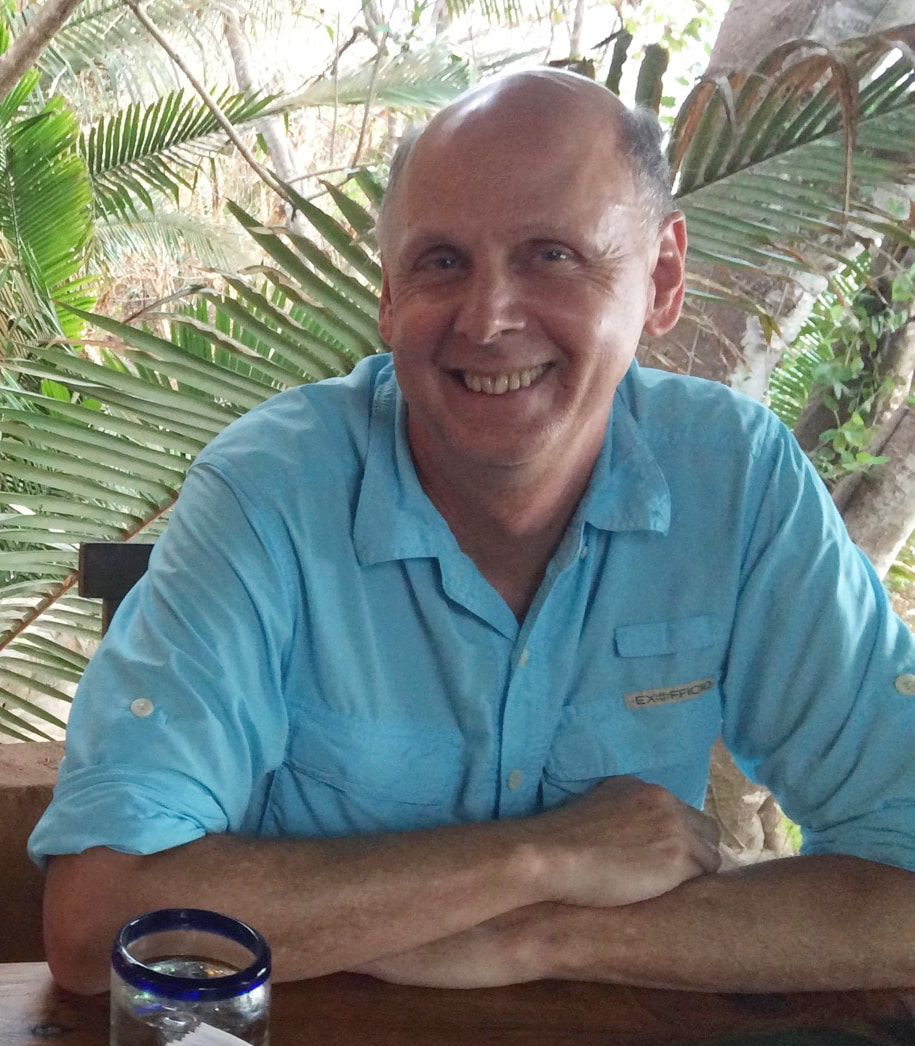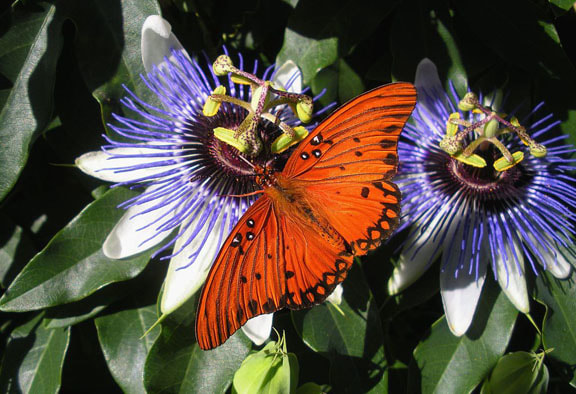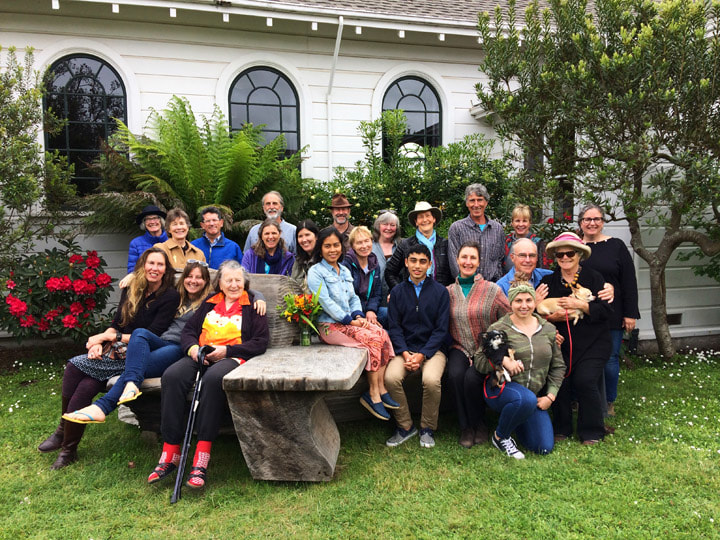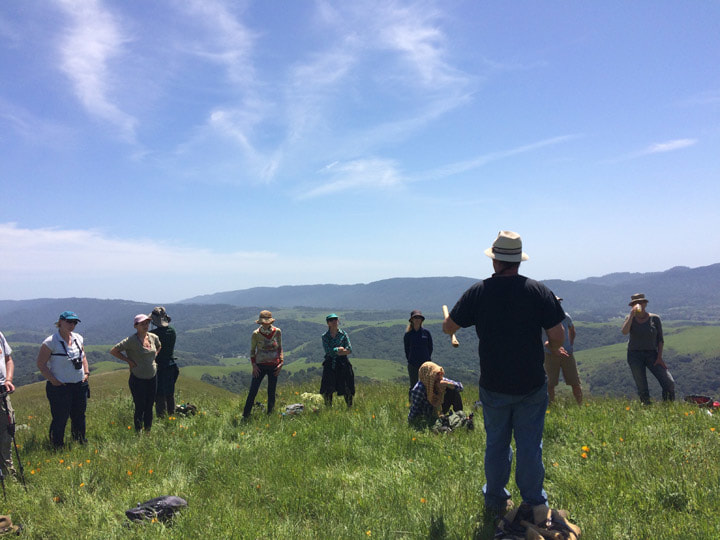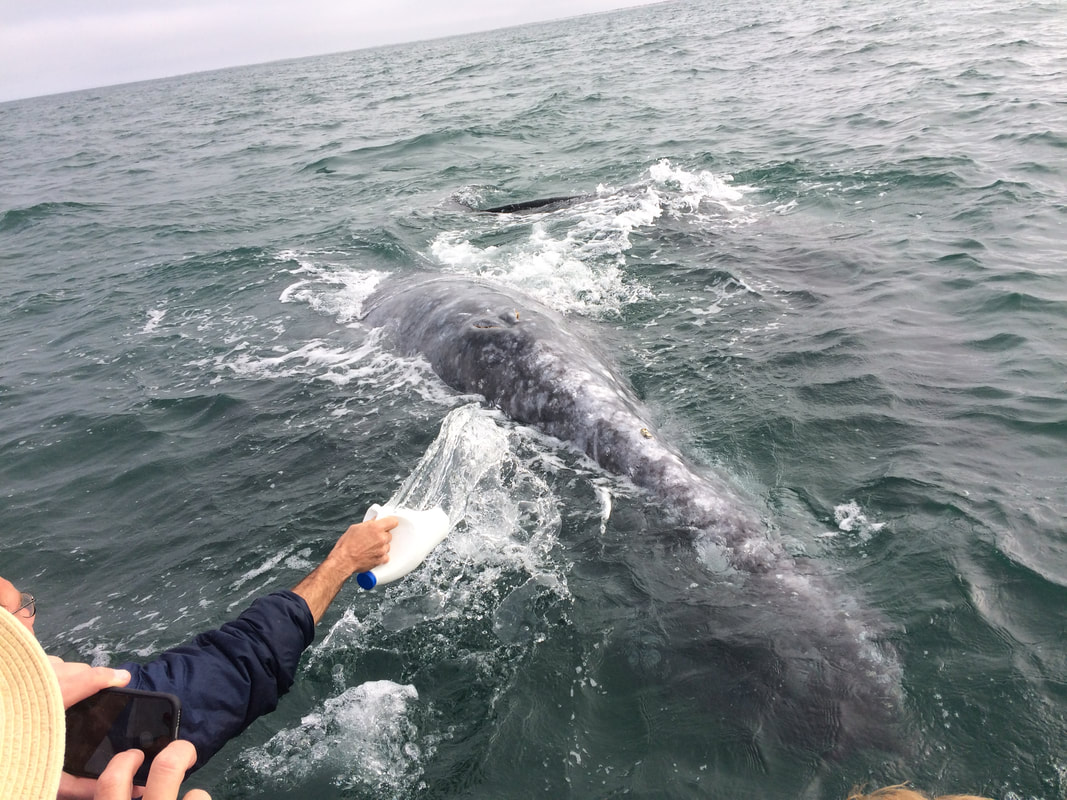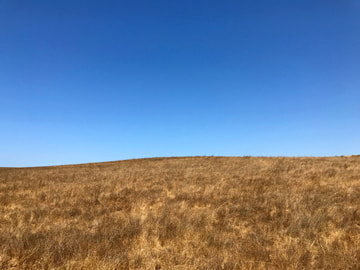 Compare and contrast. August 2020. The nearby Woodward fire still smolders, but its smoke is wafting in the other direction. September 2018. Overhead one recent morning a big gap appeared in the white haze shrouding my home region since the Camp Fire erupted. For more than a week the winds that fanned the Butte County blaze into calamitous proportions also sent a monstrous tide of smoke toward the coast and San Francisco Bay. A literal white-out consumed the three-dimensional landscape we inhabit. Just to see the way to the local branch library became challenging, with an N95 mask affixed to one’s face, especially for people, like me, who wear glasses: the mask makes them steam up, so the choice is between seeing and breathing. There has been no outdoor exercise to speak of. Body and soul are growing stiff. That’s why this patch of blue overhead is such a delirious delight. I run to the window to make sure I’m seeing it, just the way I run to the window when a bright Townsend’s warbler hip-hops through the nearby oak foliage. How strong my response that It began much smaller, so small and surprising that I doubted its existence, at first. Yet there it is. Growing larger. The color filling this gap: sky blue. What a profound effect on the cells of my body this has, beholding this sky blue beyond all the vapor and haze, waiting to return as the weather pattern shifts. Suddenly the whole world feels like a promise, a dance. May that gap grow larger and prevail. May the clearing shine on the victims of the Butte County fire, like an affirmation. Of course the smoke and chemical particulates shot into the lower atmosphere by the conflagration will keep going somewhere. More of our stuff, stored one way and another in our planet’s thin sheath of life-supporting gases. But right now so many people in California need to take another breath, take another step, breathe and step in mutual support, that a bit of blue sky means hope. Perhaps it has always been this way with human beings: Looking up at clouds and sunlight and the arc of the daytime sky has bred into us a deep love of the color sky blue. Or, the colors, plural, sky blue, since the light at different locations on our planet plays with the atmosphere in varied ways, producing a whole panorama of blues. That would make sense: for cosmology and biology to intersect when it comes to people throwing their senses open to the sky above. Consider what blue means up there, how it’s “made.” Nobody is mixing pigment and aerospraying luminous blue all around the world. Instead we are seeing a very large prism in action. The narrow sheath of gases surrounding Earth – our atmosphere – play a mechanical trick with the spectrum of light generated by our sun. Because of the wavelength of different colors in the spectrum, most are peeled off and neutralized by the atmosphere. Blue remains. It’s so strong that it stains the ocean blue (there is no liquid compound with a deep blue color dissolved throughout the sea!). As an ethereal offspring sun and atmosphere, blue in our sky is the utmost expression of life on Earth and all its possibilities. It’s the banner color for Gaia, the self-regulating system co-created by life with solar energy and a mix of gases that modulates temperature and chemistry… for life. Our sun, which looks blindingly yellow-white overhead, and fuels the photosynthesis that ultimately gives rise to our bodies, is essential in the production of blue. Consider the color of “our” sky at night: it’s jet black and lit up by suns and galaxies that represent the closest layer of a creation untold billion miles across. Earth’s atmosphere is still there at night, just not perceptible in the same way it is by day. Sunrise on a clear, smoke-free day, catches the highest clouds overhead first, and proceeds to send reddish colors across a low angle of the prism of the atmosphere. Then we have until sunset to flourish beneath blue, to look up at water vapor and sunlight in a gaseous skin caressing the planet’s entire surface. Today a case of the blues is a case of great joy. Let’s dance our praise, get warm in our metabolism, link rhythmically with other people and all life forms, get a bit winded, exhale CO2 into the atmosphere, give thanks for every breath. This was one of 15 reflections, by varied members of the Point Reyes community, about our experience of the sacred in the land. A month-long exhibition in October featured the great photos of Todd Pickering juxtaposed with the written word. "This Sacred Land" included essays and poems by a farmer, a surfer, a doctor, a high-schooler, and more. I self-identified as "an improviser."
Sensory one-ness with Earth’s living energies… during glimmering moments at the ocean’s edge or yielding to trees’ green embrace… is how I experience the sacred in the land. In immersive moments outside of time, a person is beckoned home into the more-than-human world. Earth is an elegant, dynamic system, Gaia. All living beings participate in a looping dance among the atmosphere, sunlight, ocean, soils, and life. Our rocky planet is alive. Earth is essentially an organism, with rock, air, and water her bones and blood, ecosystems and biomes her muscle, her organs. Consciousness pervades our planetary dynamic. Gaia’s mind resonates with the ripples of intelligence emanating through our universe. Such knowledge-sensations arise when I go walking or swimming in favorite Point Reyes locales. My brain relaxes. My attention turns toward life forms and Earth energies. I enter my church. Notice and revere. Walk, breathe, feel, wonder. Relax thinking-effort in order to learn. Learning is my vocation. I give myself to the great teacher, Gaia. Deep grief may arise for the losses and suffering due to human-caused global change. Joy from a dew-lit cobweb, the matrix of wonder. All insight is sensory: feet bare, cold water on skin, everywhere the breeze, ravens calling, how it feels to move. Where? For more than half my life—since the time when I chanced to land within greater Point Reyes’ embrace—a foremost guide and friend has been Limantour Beach. A mantra has arisen, “the light at Limantour,” for this locale is rich in shimmer: the interplay of sky (sunlight, clouds, breeze), water (vast reflective bay and nearshore ocean), surf (rhythmic far-traveled energy/glistening sands/shifting tides), and the graceful curve of dunes and headlands. Embodied experience at Limantour is always new: the place is never the same as before. After a thousand visits there, the coming one will be a surprise, a thrill. Step out of your parked car. Let the clicks and groans of the engine subside, the sounds of place arise. The air tastes of warm hills, of fecund marsh, of ocean. The music of surf hums and throbs; nearby songbirds chatter. Step by step, you arrive. Admit the blessings of this place into your lungs and blood, your bones. Now, between sky and earth, a hominid is coming home. Sensory pathways into magic can open up in many a Point Reyes locale. In the pulsing green interplay of sunlight, water and soil in oak grove, alder thicket, conifer forest. In the riot of color, shape and texture revealed by a minus tide on the rocky outer coast. Far from shore in the salty bay at dusk, immersed and weightless, body refreshed, soul revived. Wherever the more-than-human world becomes a person’s whole sensory experience is where we know Gaia. And pathways into this sacred relationship abound at Point Reyes, a most generous land. John's life ended on July 23, 2019, under compassionate care at the home where he spent his last several months. As with most things about him, his death was conscious. He was out of pain. His two daughters, Beatrice and Genevieve (Gigi), his sweetheart Pat Kunze, and his sister Claire were nearby; John had asked one of them to always stay by his side. Along with grief for losing him, there's a felt sense of release for John from a very difficult ALS journey. He knew that his path led into pure white light, which was joy for him to envision.
A great many people feel the loss of John, and this is testament to the light and love that he brought into his friends' and loved ones' lives. His strong gift was connecting with people, delighting in shared experience—especially dance!, and twinkling his warm laughter. John’s kindness consisted of genuine interest in others, catalyzing shared insights or having fun. Anyone who experienced his energy has seen how it is to be kind and creative; this is a big part of John's legacy. John would doubtless say that his daughters are his biggest gift in life. His love for Gigi and Beatrice, nurturing these two beautiful humans through their childhood and witnessing their brilliance as adults, has been at the center of John's life journey. Anyone who heard him tell of celebrations with his daughters—of the journeys, gatherings, shared enjoyment; of both their creativity, good fortunes, and the ways he participated in their lives—knows of John's greatest pride and contentment. In turn, the devotion these young women gave their dad through his challenging last year is testimony to a phenomenal life connection. The last several years of John’s life were also a chance for him to enjoy for himself the gifts he was giving others. With Pat, he found beautiful love. Laughter, music, adventure, harmony, and comfort with one another moment-to-moment pervaded their experience. When these two became dance-partners-in-life, John’s light fully lit up. He very much wished for a longer time to experience this love—and keep giving to everyone around him. For those who knew John through time, witnessing him arrive where he did was fabulous. He kept orienting toward spiritual and emotional wholeness, as if he knew something wonderful was possible. He kept becoming a more complete person and reflecting on how this felt. So, when his dancing life flowered, his friend-circle magnified, his daughters were flourishing, and great love entered his life, John knew what to do. Embrace all that joy and share it with others, vigorously. We are grateful for the gifts John gave us. Originally published as a guest column in the 14 Feb 2019 Point Reyes Light.
What comes to mind when you think about walking a trail in one of our parks, not just for exercise or nature observation, but also as a pilgrim? What makes a journey into any natural landscape a pilgrimage? And in today’s climate—both the literal climate of our stressed planet and also the cultural climate that we help create—what’s the purpose for pilgrim walking? For me, understanding all of this does not come, well, naturally. I’m actively studying “pilgrimage” by reading what wise people have written, talking with individuals who live and teach as latter-day pilgrims and, ultimately, walking in nature to consult the land itself. The dire predicament of our planet’s living systems is the larger context now for all of my big life questions, including ones about nature pilgrimage. You’d think I might already have some deeper understanding here. Last April, I joined a few dozen people on an Earth Day pilgrimage, hiking to the summit of the West Marin landmark that gives Black Mountain Circle its name. This local nonprofit, whose mission interweaves nature, spirit and story, arranged access with Black Mountain Ranch owner Dave Osborn. We walked in order to notice what our living planet now is asking of human beings. As things turned out that day, the mountain itself, like a wise elder, directed our inquiry. The steep climb and springtime beauty relieved many walkers from the constant buzz of thoughts and distractions. The land invited us to walk in silence. Arriving at the mountain’s summit, we felt enlivened, like human conduits between the moist earth and the bright atmosphere. Our revered guide that day, Sky Road Webb, taught us songs inspired by his Coast Miwok lineage. Connection with our living planet was abundant. Since that time, Black Mountain Circle has kept exploring pilgrimage as a way of finding the sacred in nature and focusing human intention. A primary way to learn about this is to journey into the landscape on foot. Last August, the group hosted a two-day walk to physically connect with the entirety of Lagunitas Creek, from upper San Geronimo Valley to Tomales Bay. The route took those 20 pilgrims along a section of Black Mountain’s foot where the creek flows westward from Platform Bridge. Leading this pilgrimage were Kate Bunney and Scott Davidson. Kate is an innovative activist devoted to restoring healthy watersheds and human communities through a program called Walking Water. Scott is a skilled nature-awareness tracker based in West Marin. So I took my questions about pilgrimage to both of these insightful people. My conversation with Scott took place during a morning walk near Bear Valley. We mostly listened to the place—and covered all of 200 meters, exchanging about 50 words. He later told me, in regard to pilgrim walking, “There’s a kind of devotional surrender to being guided with each step, in true intimate contact with the mystery of life.” I asked Kate what distinguishes a pilgrim walk from a day hike, even a quiet, introspective one. She answered, “As a group we set an intention at the start of a pilgrim walk. Then we go mostly in silence, with attention on the landscape. We stop along the way and hold council, so that everyone present, even those on differing sides of an issue, can enter into strong connection with one another and the Earth. It’s a way of changing how we live in order to be part of the healing needed today.” This brings to mind the long, silent walk begun by former West Marin resident John Francis as a response to the 1971 oil spill in the San Francisco Bay. His years-long pilgrimage, which John called Planetwalk, has generated extraordinary attention for healing our environment. Both John Francis and Kate Bunney will be part of a remarkable gathering in Point Reyes Station on March 16 about redefining pilgrimage. Among the other presenters that day will be the organizers of a two-week journey by foot and boat up the Sacramento River to Lake Shasta. Tracing the migration route of endangered Chinook salmon, they aim to help protect both the fish and lands sacred to the Winnemem Wintu Tribe. Now that’s sacred pilgrimage in action! The quiet paths of Point Reyes will be my main place to ask the trees and streams and ferns and finches for the courage to notice what the Earth now needs from us humans. Enriched by the March 16 gathering and related events throughout 2019, this is a way for me to map my personal geography of hope. (they're back : Gulf fritillary butterflies in Point Reyes Station) This text was originally published by EAC in late fall 2016. Today I spent some joyous minutes at the scene with bright orange lepidopterans flurrying all around me. A noteworthy wildlife phenomenon in downtown Point Reyes Station has recurred this year, after first attracting notice in 2012. It centers on a large, bright orange butterfly known as the gulf fritillary, a species that evolved in the Tropics. Yet here in chilly coastal California, fritillaries have reestablished an intermittent population--very locally. A small swarm of these gorgeous lepidopterans conducts life, quite actively on warm days, in front of the Old Creamery Building, at the corner of Mesa Road and Highway One. Why, and how? The answers reside in the landscape plants that ornament a miniature plaza near the West Marin Community Thrift Store. There a fence bordering big rose and juniper shrubs is thickly bedecked with passion flower vine (Passiflora species), and this is the gulf fritillary’s host plant. Flying adult butterflies, looking like shards of sunlight, busily interact with the Passiflora and one another, oblivious to people watching mere inches away. Two such people on a warm afternoon in mid-November were butterfly conservationist Barbara Deutsch and I. The information conveyed here is from Barbara’s vast storehouse of knowledge. Every activity in the fritillary’s life cycle is on display (to the practiced eye) on or near the passion flower. A female, slightly duller than a male, rests on a leaf to evaluate conditions that may favor survival for a single tiny egg—one of 300–400 that she will place. One or more males swoop in, seemingly eagerly. One dances above the female, invisibly sprinkling pheromones that communicate to her the value of his offering. Packaged in the spermatophores that he produces one-by-one, a male will deliver vital nutrients that strengthen an embryo. The female likely chooses a well-endowed mate and may even be able to hold several spermatophores inside her “purse” before drawing upon one to fertilize her eggs. Individuals exemplifying other stages of butterfly life are here, as well. Along with pinhead-sized yellow eggs on the foliage, caterpillars of several sizes (or instars) are busy feeding and growing. Affixed and seemingly still are not-yet-hardened pre-pupae and also the pupae, wherein occurs the big magic—metamorphosis. Coming and Going… or Staying This butterfly’s range extension up the West Coast, over time, may have accompanied the arrival of new citizens from Mexico, who planted passion flower for its food, medicine, and ornamental values. Gulf fritillaries have been sighted as far north as Canada and, by the 1960s, appeared in San Francisco, along with Passiflora. The vine that supports fritillaries in Point Reyes Station is decades old, and so is a dense patch of passion flower in Valley Ford where these butterflies also live. Key to fritillary survival in our moist, cool bioregion are the size and thickness of the host vine, along with other attributes of a site. In Point Reyes Station the neighboring shrubs, a southern exposure, and factors in the built environment all contribute to the habitat, such that fritillary adults and caterpillars can shelter in the Passiflora to live through freezing nights. If the foliage is cut or dies back at a critical time, the fritillary population may crash, as evidently happened here in approximately 2014. However, a well-used vine remains a signpost for wandering butterflies. Drawn to quality habitat, they will home in on chemical traces left on the host plant by past generations of fritillaries. Enough of them convened here this year to manifest a beautiful renewal. This is change in progress, with the possibility that gulf fritillaries can dwell in Point Reyes Station year-round—essentially permanently! The same potential exists for many a butterfly species if it can find, in the wild or cultivated by people, the particular host plant and habitat features that it requires. May 13th was a good day in greater West Marin. On the walkway outside The Dance Palace Community Center, a couple dozen souls, aged 15 to 75, gathered to rededicate the giant carved bench that commemorates the life of Jonathan Rowe. Jonathan was a visionary spokesperson for the value of the commons. The bench—a tree-sculpture-that-people-can-sit-on-together—was carved in Jonathan’s memory by Rufus Blunk. Men and machines recently moved it from the Main Street corner near the little yellow house to its new location at The Dance Palace.
Jonathan would have loved this dedication. His son Josh, standing strong at the finish of his sophomore year in high school, spoke of his father’s ideals and of this community. The Dance Palace board of directors, in the person of Elizabeth Zarlengo, presented Mary Jean Espulgar-Rowe with a Mothers Day bouquet. Indoors, a 30-piece big band from Albany was warming up for a free dance concert, courtesy of Joe and Mo Blumenthal, with donations to benefit this community center. Peering through the porch doors were Linda and Barry Linder at their usual post serving beverages to help raise funds. Meanwhile, out at the bench, Mark Switzer gave a stirring talk about the enduring and necessary nature of the commons. Quite possibly, he was channeling Jonathan; certainly he was honoring his memory. Mark advanced the notion that West Marin itself serves as a commons for the greater Bay Area and beyond—for our world. Those of us living here can view our home region, in part, as a place that holds value for many people, and that we have the privilege of caring for. Later, in one-on-one conversation, Josh Rowe told me about his academic and athletic pursuits, his new horizons. And he reflected on West Marin. “I didn’t realize how amazing this place is until after we moved to Novato,” he said. “When I was younger and we were living here, everyone knew me. I walked to and from school, and at least two people would say hi to me, every time.” It’s so fine to see Josh taking flight—and to know he will always have strong community here. Walkers who arrived on the summit of Black Mountain on 4/22/2018 celebrated our connection with Earth and sky. The elements of fire (in our life energy) and water in the soil and plant life: these too were present.
We learned much from that man in the hat, Sky Road Webb, through his teaching stories and the songs (in Miwok language!) he led. Sky Road had researched the likely ancestral name for this mountain. It translate to Coyote's Bones -- especially the bones used in a gambling game that had the power to settle differences among people. This hike was a pilgrimage conceived of by the non-profit organization Black Mountain Circle. Participating in the day made me reflect on the meaning of pilgrimage. It's a journey to a sacred place... or any long quest, especially of high purpose or devotion. The word pilgrim evolved from a twist on the Latin root peregrinus... as in the falcon (!). Our Earth Day journey invited us to reflect on our lives in a powerful landscape. We walked for the most part in silence, receptive to insight from the living world, stopping now and then to notice and appreciate. Some of us carried questions in our hearts. We traveled as a community, sharing food with one another and with the spirits atop the mountain. As a pilgrim, I felt myself open and empty like a basket, with no particular request -- just wonder and praise. The journey itself was the gift. Reflecting on this is one small way that I can reciprocate. Gratitude, Coyote's Bones! Some of us who've traveled with Michael Stocker to San Ignacio Lagoon, to meet some friendly gray whales, now are creating fundraisers for his organization. A guest column by me in the 12 Oct 2017 Point Reyes Light says more: Here on Earth, we’re learning what it means to live in truly dangerous times. Radical disruption is at work in all life zones, including the ones we’re conditioned to believe are safe and stable. Hearts are breaking for inhabitants of disaster areas both around the world and close to home.
As humans, we are naturally focused on biomes that support terrestrial life. Yet we sometimes catch a glimpse of the other 75 percent of our planet’s livable surface: the ocean. We might spy a big spout or broad flukes just off our coast, where large numbers of humpback whales are now feasting, and for a moment imagine their unseen environment. Yet at least one person in West Marin spends many waking hours (and doubtless much of his dream time) considering whales and their kin. Michael Stocker, a Lagunitas resident, studies marine mammals and the biggest challenge they face: noise. “Cetaceans use sound—with great finesse—to orient their travels and to communicate with one another, often across hundreds, if not thousands, of miles,” he explains. “So the noise that humans are causing in the world’s ocean poses enormous problems for these intelligent beings.” The enormity of the problem became clear during the 1990s. Whales and dolphins began beaching themselves in many regions, sometimes in large numbers, at a time when United States and NATO naval exercises were testing sonic technology. “It was the catastrophic strandings of cetaceans that brought public attention to the ocean noise issue,” Stocker says. “But it’s the increasing industrialization of the ocean that’s causing a much more sinister problem. A growing ‘acoustic smog’ is gradually obscuring the environmental signals that are important to all marine life.” As a bio-acoustician who studied both physics and natural sciences, Michael Stocker is equipped to probe for solutions. He launched a David-versus-Goliath campaign to change the ways that industry and the military deploy extreme sound in the sea. In 1997, he founded an essentially one-man group called Ocean Conservation Research, whose one-room world headquarters today is in San Rafael. When he teaches, Stocker brings everyday citizens and high-level policymakers alike into the beauty and intricacy of marine mammals’ auditory environment. He also demonstrates the horribly harsh effects of noises that accompany oil exploration, military technology and huge ship engines. With numerous technical and scientific papers, expert testimony and a book (“Hear Where We Are”) to his name, Stocker has earned a place at the ocean noise pollution table. Yet he remains essentially a one-man band—an apt metaphor, because he is also a jazz musician who excels on five different instruments. On Nov. 18, local artists will host an afternoon benefit for Ocean Conservation Research at Toby’s Feed Barn. Along with a talk and an auction of unusual artwork, recorded songs of humpback whales will waft among the hay bales. Earth can be a most engaging place to inhabit. 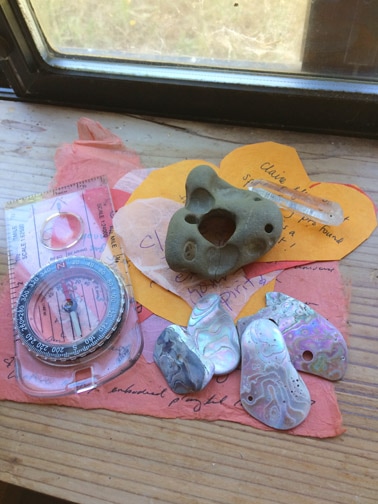 This week I came "home" from a remarkable journey through the seasons and into stronger wholeness and good energy. I'm writing this postcard from the new place (in my same beloved lifetime) so that you too will know about the chance to travel such a path. It starts right down the road from where we live in West Marin -- at Commonweal Garden, where the Regenerative Design Institute has sprouted and born fruit. Soon Penny and James will take RDI with them to the greater Puget Sound bioregion, but the garden will continue to provide bounty here. This September is another chance to embark on the Art of Vitality, a journey through the seasons, piloted by James Stark (wizard) and Anna O'Malley (healer). Their collaboration is remarkable, and the alchemy obtained within a group of willing souls over a span of 9 or 10 months -- powerful. Here's a glimpse of what happened in "wisdom of the seasons 1" (the Art Of Vitality cycle that just concluded). A committed group of about 20 people met four times between September and July, each time for a 3-day residential retreat. Some of what occurred: circle gatherings in a yurt and around a fire; deep time in sit spots in a meadow; brilliant information shared about health from body-wisdom-science; foods prepared and shared, the most delicious medicine; a model for spiritual wholeness, first as a sketch on the whiteboard and then arising and resonating deep within our selves; the living Earth's embrace, reciprocated; the ever-present great love between people kindled and fed; dancing; reflecting; tears and laughter; the evolution of a village, an ecosystem. From all this and more, we emerged devoted to this model for how to be humans now and into the future. Many experiential teachings are leading allies along such paths at present. Art of Vitality is one splendid one, and I recommend it to you wholeheartedly. Gratitude and love. |
|
